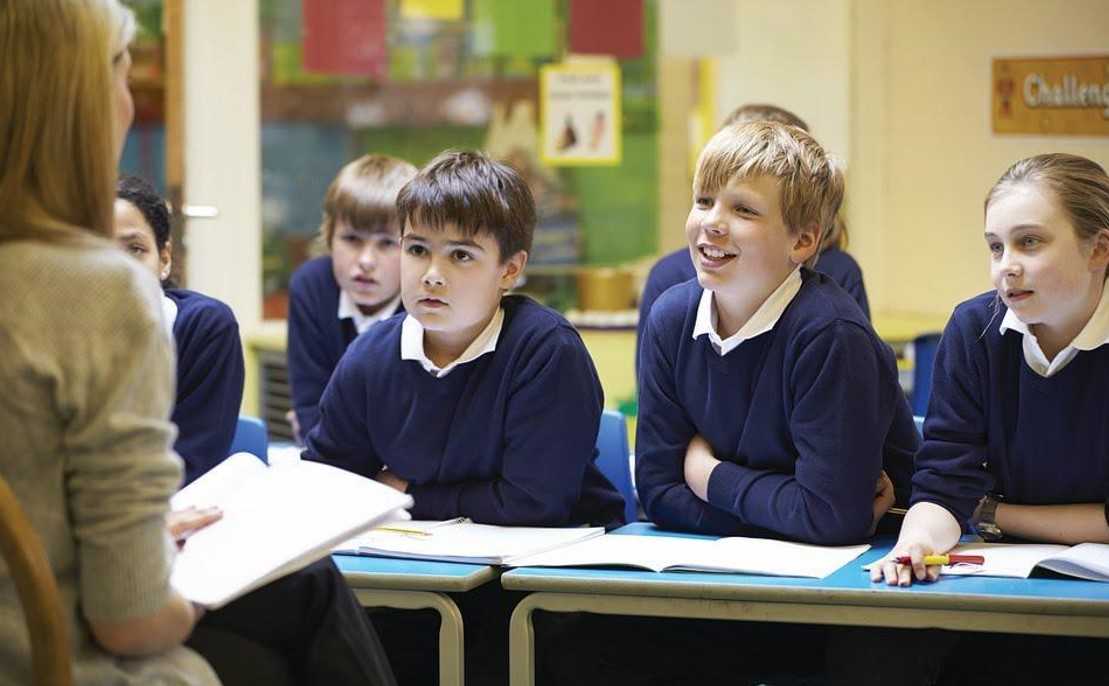When distractions seem to be ever-present in our lives, especially with so much of our day spent firmly connected to screens, it is more important than ever to incorporate mindfulness into our routines. This is true for every setting: from the boardroom to the classroom.
It is easy to understand why people might be skeptical at first. This might sound like another trendy buzzword with all fluff and no substance for a CEO, principal, sales manager, or middle school math teacher.
“Mindfulness” might sound like a distraction to a hardworking teacher trying to maintain order in a classroom, ultimately trying to get students to a finish line, whether that means finishing an essay, passing a standards test, or completing eighth grade and moving on to high school.
However, practicing mindfulness is proven to improve the classroom experience for teachers and students and could make it easier for the teacher to maintain order and help students achieve their goals.
Mindful behavior in the classroom can lead to better engagement, better grades, and enhanced social and emotional skills. Read on to learn how to introduce mindful behavior in your class.
What Is Mindfulness?
One of the easiest ways to describe mindfulness would be a heightened awareness of yourself. Mindfulness practice involves paying close attention to your body, your reactions, and how you relate to the environment and stressors around you.

Some adults might assume the mindfulness concept is too advanced for children, that it belongs only in the yoga studio or a meditation class. However, mindfulness practice can be introduced and taught early, with great effectiveness in the classroom, when tailored to young students.
One of the most important keys to achieving mindfulness is staying calm. This means while staying focused on what you are doing, you are not rushing through a task absent-mindedly or feeling panicky about getting it done. Mindfulness is about intentional focus, staying aware and present in the moment.
Younger students are often easily distracted and want to move on to the next thing quickly (especially if that “thing” is recess!). Teachers who implement mindfulness training in these early elementary classrooms will help students develop habits they will use successfully throughout the rest of their education.
Of course, mindfulness does not stop in the classroom! It also extends into our working lives as well as our relationships, so these techniques and behaviors can genuinely change the overall quality of our lives. Mindfulness can help us manage stress and anxiety, complete important tasks, relate to others with compassion, and experience gratitude on a daily basis.
How Can Teachers Introduce Mindful Behavior in Students?
Teachers set a tone for the classroom by practicing mindfulness themselves, so every educator needs to take stock of their own habits. Ask yourself how you are reacting to class disruptions, how you are managing particularly hectic days, or how you are responding to students with behavioral challenges.
By taking stock of our mindfulness techniques (or lack thereof), teachers can decide what is needed to set the right tone for students. There are many ways to introduce mindful behavior in the classroom, and there is no one size fits all approach. You can tailor the ideas below to the specific needs of your class size, the age of your students, and any other factors that may be specific to your school community.
Calming Classrooms
One of the best ways to encourage mindfulness is by creating the right environment for it. Think about the overall feeling of your classroom: is it organized and orderly? Are there soothing colors, textures, and images? Do you implement techniques to keep noise under control?

A few simple and inexpensive touches could make your class environment one in which you can fully embrace mindfulness. Play some calming classical music at a low level during a reading period, or replace your wall art with calming and soothing images.
Even taking a few extra minutes each day to get things organized before students arrive will make a difference. It is hard for anyone to stay mindful in a cluttered environment!
Mindful Breathing Techniques
Try fun mindful breathing techniques in your classroom, which will help your students cope whenever they feel anxious or overwhelmed (and these techniques are just as helpful for teachers!)
When we focus intentionally on our breathing, we become much more aware of how our bodies handle stress. These techniques should be taught and practiced in the classroom so students can learn to use them independently when needed.
Daily Intentions

Another effective habit in a mindful classroom is a daily time to set intentions or goals. Start each day by discussing these intentions with your students. Some days it can be as simple as, “Our goal today is to focus on volume.
Together we will all try to stay focused on our own noise levels so we can try to eliminate distractions for those around us.” By setting a specific intention as a group, students are more inclined to remain aware of the goal throughout the day and how their own behavior plays a part in achieving the desired outcome.
The Effects of Mindful Behavior in Schools
The list of ways mindfulness enhances the classroom environment is vast (and perhaps even still growing as we study its effects), but, in general, you can count on these improvements if you practice mindful behavior techniques:
- Reduced testing anxiety
- Better peer relationships and communication
- Reduced aggressive behaviors
- Increased focus and attention
These changes ultimately contribute to growth in learning and students whose social and emotional health is nurtured through simple yet effective techniques.



